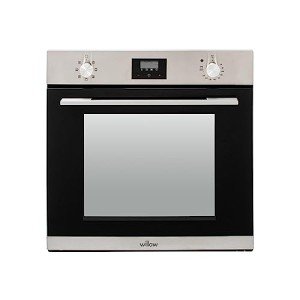The Rise of Built-In Ovens: A Seamless Approach to Modern Cooking
In contemporary kitchen areas, where style looks blend flawlessly with performance, one device sticks out as a true video game changer: the built-in oven. As property owners and chefs alike continue to look for ingenious options that improve their cooking experience, built-in ovens have actually become progressively popular. This short article checks out the advantages, considerations, and trends surrounding built-in ovens, highlighting why they are an important function in contemporary cooking spaces.
What is a Built-In Oven?
A built-in oven is a kitchen area home appliance developed to be integrated into the cabinetry of a kitchen area instead of standing alone. Unlike traditional freestanding ovens, which can be moved and positioned anywhere, built-in ovens come in different designs and sizes to fit specifically within designated spaces. Available in single or double configurations, these ovens use a structured appearance that complements modern kitchen styles.
he has a good point of Built-In Ovens
1. Space-Saving Design
One of the most enticing advantages of built-in ovens is their space-saving design. By integrating the oven into cabinets, you can release up valuable counter and flooring space. This is particularly advantageous in smaller kitchen areas, where making the most of room is essential. Built-in ovens can be installed at eye level, making them more available and reducing the need to bend down.
2. Aesthetic Appeal
Built-in ovens add to a sleek and cohesive kitchen style. Available in various surfaces-- such as stainless-steel, black, white, and custom cabinetry-- they can blend flawlessly into the general decoration. This visual appeal boosts the kitchen area's visual consistency and raises the space, producing a modern-day and advanced atmosphere.

3. Improved Functionality
Numerous built-in ovens come geared up with innovative cooking technologies, such as convection cooking, steam ovens, and smart features. These improvements enable versatile cooking alternatives, making it easier to accomplish professional-level results in the house. Smart built-in ovens can even connect to Wi-Fi, allowing users to manage the oven remotely, get notices, and gain access to a variety of cooking programs and dishes.
4. Improved Ventilation
Because built-in ovens can be integrated with cooking area hoods and ventilation systems, they can assist maintain much better air quality and decrease cooking odors. This is specifically significant for those who like to cook with fragrant spices and active ingredients, as an efficient ventilation system can keep the cooking area comfy and inviting.
5. Personalization Options
Built-in ovens offer a large range of modification alternatives to suit specific cooking designs and needs. From professional-grade appliances with numerous cooking modes to compact styles for smaller sized kitchens, property owners can pick the oven that fits their particular requirements. Numerous makers also offer personalized front panels, allowing you to match the oven's appearance to your cabinets for a genuinely combined appearance.
Considerations When Choosing a Built-In Oven
While built-in ovens have lots of advantages, there are necessary factors to consider to bear in mind before purchasing:
1. Price
Built-in ovens generally include a greater cost tag than their freestanding counterparts due to their style and setup requirements. It's essential to consider both the expense of the oven and any additional expenditures related to kitchen cabinetry modifications or setup.
2. Setup Requirements
Installing a built-in oven often requires professional help, specifically if you need to modify existing kitchen cabinetry. Make sure that you consider any costs connected with setup, consisting of labor and potential kitchen cabinetry modifications.
3. Size and Dimensions
Before acquiring a built-in oven, measure the designated area precisely to ensure a proper fit. Built-in ovens can be found in various sizes and setups, so selecting one that lines up with your needs and kitchen design is essential.
4. Lifestyle and Usage
Consider your cooking habits and requires when choosing a built-in oven. If you often host large gatherings, a double oven might be more advantageous. On the other hand, if you have a compact kitchen, a single-wall oven may be adequate.
Patterns in Built-In Ovens
The kitchen area device market is continuously evolving, and built-in ovens are not exempt from emerging patterns. Some existing patterns consist of:
Smart Technology Integration: With the increase of smart home technology, built-in ovens now typically feature connectivity options. This enables users to keep an eye on cooking progress and adjust settings via mobile apps.
Energy Efficiency: As sustainability ends up being a top priority, lots of manufacturers are investing in energy-efficient built-in ovens that lower energy consumption while keeping efficiency.
Multi-functional Designs: Built-in ovens now offer features such as air frying, sluggish cooking, and steaming, offering adaptability that meets a wide variety of cooking techniques.
Conclusion
Built-in ovens undoubtedly represent a best mix of design, function, and convenience in today's cooking areas. As more homeowners choose for this contemporary service, the focus moves to producing a cooking area that is as aesthetically pleasing as it is practical. Whether you are developing a new home or remodeling your cooking area, considering a built-in oven could elevate your cooking experience and transform your kitchen area into an elegant and practical sanctuary. With he has a good point of choices readily available and continuous innovations in innovation, built-in ovens stay a standout choice for both newbie cooks and culinary lovers alike.
